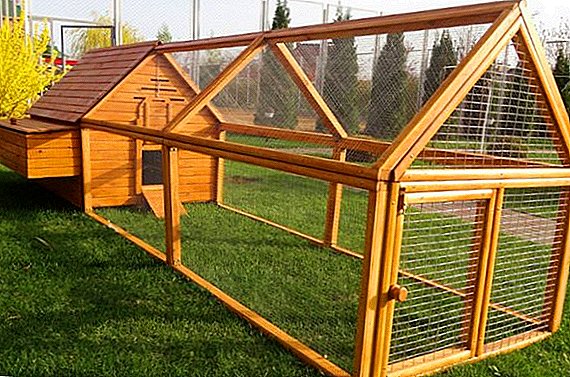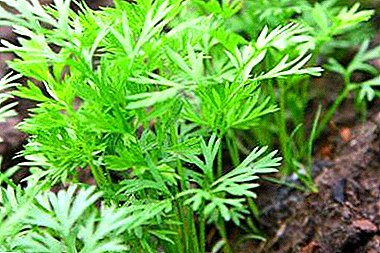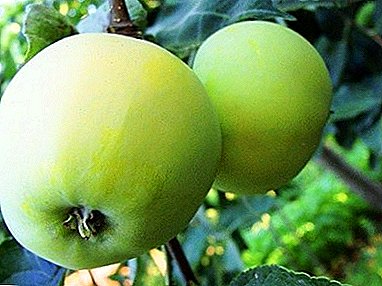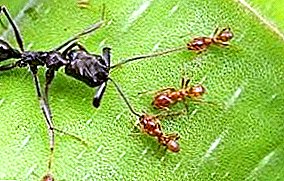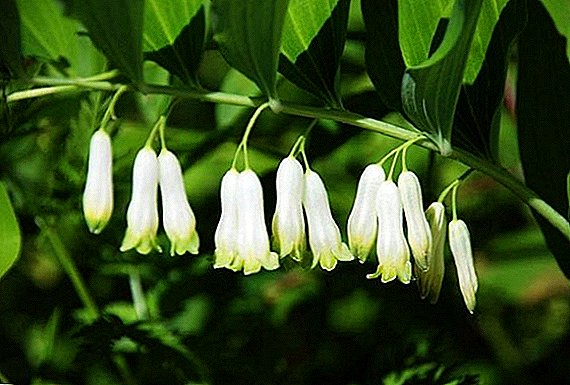 A beautiful decoration of the suburban area or house garden will be a multi-flowered kupena, planting and care of which will be discussed in this article. Incredibly beautiful, delicate plant can decorate any yard.
A beautiful decoration of the suburban area or house garden will be a multi-flowered kupena, planting and care of which will be discussed in this article. Incredibly beautiful, delicate plant can decorate any yard.
Botanical description
Coopena belongs to the family of the Landyshevs, has a rather modest appearance, but at the same time it looks elegant.
Important! Kupena is a poisonous plant, harmful substances are contained in all its parts. Once in the human body, they can cause vomiting and poisoning, so you should carefully carry out all agricultural practices and prevent children from getting to the bush.
 The flower is unpretentious perennial, whose height is up to 1.5 meters. The plant has a multi-rhizome, wide leaves with prominent veins, nodular stem, which constantly leans to the ground.
The flower is unpretentious perennial, whose height is up to 1.5 meters. The plant has a multi-rhizome, wide leaves with prominent veins, nodular stem, which constantly leans to the ground.The flowers are white, less pink, cream or greenish color. Dissolving occurs in May. It blooms for almost a month, and after the appearance of blue or red berries, the bush acquires a different, equally beautiful appearance.
In one inflorescence there are from 2 to 5 bells. Their disclosure occurs, starting at the bottom. With the arrival of autumn, the foliage and stems turn yellow and die. 
Choosing a place for a flower
For a flower to grow healthy and beautiful, it is important to plant it in the right place.
Location and lighting
Plant Solomon's seal prefers shady places. If the flower is planted on too sunny a plot, its growth may not occur so quickly, and an adult plant will not please you with its pomp.
It is recommended to plant a flower under a tree - it will look beautiful in the form of thickets. 
Growing soil
Plant any soil, but if you want growth to occur rapidly, it is better to give preference to a dense, fertile land. Poor soil inhibits flower development, and it looks painful.
Wet soil is well suited, but it should not be allowed to stagnate moisture. Choose for planting a place where the groundwater is deep.
Did you know? The plant got its name "Solomon print" due to its unique healing properties and unusual shape. According to legend, King Solomon awarded the seal with his seal for the opportunity to cope with many diseases.
Before planting, it is recommended to fertilize the soil of the bed with mineral fertilizer (15 g per bush) or wood ash. In the hole is to fill the drain, add compost, mixed with the top layer of earth. 
Planting: how to propagate a multicolored cup
Breeding can be carried out in two ways - by seeds and vegetatively. Consider each one of them.
Seeds
Not only planting and caring for a multi-flowered bough can provide you with a beautiful and healthy shrub. It is very important to choose the method of its reproduction.
The seed method is used quite rarely, since the setting of seed occurs poorly, they quickly lose their germination, flowering begins only in the third year (and sometimes in the fifth).
For breeding hybrid varieties, this method is generally not used, since the offspring does not retain maternal characteristics. If, however, you intend to use this method, it is necessary to plant the seeds in late autumn - early winter.
At best, seedlings will appear by spring, but more often this happens only in the second year. 
Vegetative
This method is the most simple and common. Rhizomes have a cranked appearance, they have marks from dead stalks, which are called seals. They are necessary to determine the age of the flower.
Since the rhizomes are quite fragile, their division should be done carefully. By August - September, kidney renewal may already be noticeable. The division is usually performed in early September or early March.
This event is not recommended to carry out more often 1 time in 3 years. In addition, the flower will be updated and you will receive a new planting material, the division will allow you to control the growth of the culture.
Important! The plant is resistant to diseases and pests, but at the end of the summer slugs can attack it. In order to prevent this, be sure to process the culture with the drug "Inta-vir."
 It is necessary to plant sprouts in pits with a depth of maximum 8 cm, while they should be placed horizontally. The distance between seedlings should be at least 20 cm.
It is necessary to plant sprouts in pits with a depth of maximum 8 cm, while they should be placed horizontally. The distance between seedlings should be at least 20 cm.After planting is necessary to lay out the mulch. During the first few years the growth of the flower will be slow, but then it will begin to rapidly grow upwards.
How to care for a plant
If you want the baths to always delight you with a beautiful view, you need to know how it is planted and care in the open field.
Watering and soil care
The plant does not need constant and careful care. Watering should be carried out only during droughts; during other periods, the baths will be fed with rainwater and groundwater.
To avoid a crust on the ground after the irrigation procedure, it is necessary to mulch the shrub. Loosening is not recommended, as it is possible to damage the plant's root system - it is quite fragile and is located close to the surface.
To fight weeds can only be the first few years, after the end of this period, the bushes grow and do not give a chance to break through the weeds. 
Fertilizer
If kupena grows in fertile soil, one fertilizer per year will suffice. Organic fertilizers, such as manure or compost, are used as top dressing. Also mineral fertilizers are added in a small amount.
Transfer
Kupena reacts negatively to frequent transplants. This plant will feel great in one place for a long time, up to 20 years.
If, however, transplantation is necessary (for example, to obtain seed material), do not disturb the shrubs with obsessive care - gradually it will regain its strength.
We shelter the bathhouse for the winter
Multiflorous kupena refers to frost-resistant varieties, so you can not cover it for the winter. If you are still worried about the plant, you can cut the shoots up to 5 cm, and cover the newly planted bushes with a layer of mulch.
Use in landscape design
Kupena in landscape design is used quite often. The plant gives the original fresh look unsightly areas, creating in them an unusual comfort. 
Did you know? Kupena is one of the champions in terms of ascorbic acid content: 330 mg of beneficial substance is contained in its leaves.
Koupena is very popular among designers due to its beautiful spreading look: even after flowering, the plant attracts attention.
The flower will be an original decoration of the rocky garden, it will harmoniously look with such flowers as daylilies, hosts, irises, tulips, forest geraniums.  Floral compositions also do not do without bathing - it fits very well into any bouquet.
Floral compositions also do not do without bathing - it fits very well into any bouquet.
Once you have become familiar with the description of the culture, the features of its reproduction and care, you will not be difficult to grow a beautiful and unusual plant on your site.


